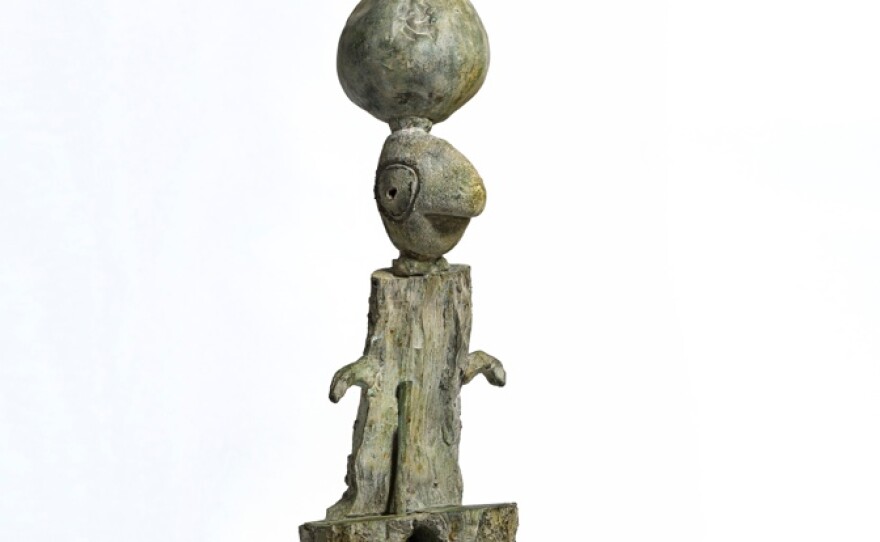The over 50 works which make up the current exhibition Miro: The Experience of Seeing represent the final two decades of work by Joan Miro. Of those 50-plus works, it's about a 50/50 split between flat, wall-mounted pieces and three-dimensional sculptures. Of those sculptures most, if not all, feature at least one or two found objects. These found objects range from parts of old rakes, tree stumps, animal horns, and even a wooden cooking spoon. But don't expect to see all the disparate objects at first glance. It takes time and several circles around each of the sculptures to fully appreciate Miro's intentions and his material.
There is an intentional interplay between the sculptures and even between the sculptures and the canvases. But it goes even further than that. These pieces of contemporary art also speak to the gallery-goer. It's as if you are within some sort of interactive arcade.
So imagine what happens when the art lovers go home, when the lights are dimmed or turned completely off. What happens when the clock strikes midnight? It's all make believe, but Miro's art seems to give you that permission. Permission granted, permission taken. On this week's show, part 3 of Modernists at The McNay, there's a dance party to music by Shafer Mahoney, John Coltrane, and Thelonious Monk. Even Mozart and Beethoven take their turns on the bandstand.
Dr. William Chiego and Rene Barilleaux are insightful guides, as always. San Antonio surface design artist Jane Dunnewold and Santa Fe paper engineer Sally Blakemore lend their views about collecting and repurposing found objects. Composer Jim Balentine recounts what music Miro's images suggest to him, and he even brings original music to this week's program. For a grand finale, we get a chorus of birds from Olivier Messiaen's opera, Saint Francis of Assisi.











